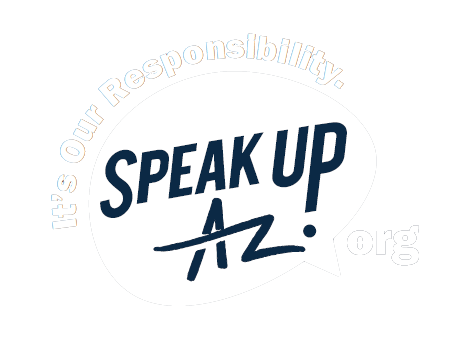DERS Career Series: How to Create an Effective Resume
Many individuals in the workforce have never received proper guidance on how to create an effective résumé, which can make landing employment challenging. There is more to a great résumé than you might think. For starters, résumés, just like today's workforce, have evolved. Luckily, employment specialists in the Arizona Department of Economic Security (DES) Division of Employment and Rehabilitation Services (DERS) are experts in creating a successful résumé, and can help job seekers tailor a résumé in a way that will make them more likely to land that coveted interview.

Since a résumé is a job seeker's first step in the door for employment, it is crucial it is up to par. Many employers won't even consider a candidate who has a bad résumé. So let's start with the basics. There are four different types of résumés: chronological, functional, combination and targeted résumés.
Chronological résumés highlight a job seeker's job history by listing it in--you guessed it--chronological order. Employers like to see the past 10 years of a candidates work history, beginning with the most recent. A functional résumé focuses on a job seeker's skills and experience. This type of résumé is ideal for individuals who lack work history, or who have hard-to-explain lapses in employment. A combination résumé highlights a candidate's work history, skills and experience. This is the most modern résumé type out there. A targeted résumé is specifically tailored to the position for which the job seeker is applying.
Today, employers prefer a blend of a combination and targeted résumé. This means a job seeker's résumé should be updated each time it is sent to the employer. The extra legwork up front is worth it to make the right impression.
"Gone are the days of having only one résumé," explains DES Workforce Supervisor Wendy Palmer.
Job seekers can create a base résumé on the Arizona Job Connection website, then customize it depending on each job for which they are applying. Palmer says it is important to use your résumé as a tool to highlight what you will bring to the company. When possible, use key words listed in the job description to match the qualifications listed on your résumé.
Instead of beginning a résumé with an objective, Palmer recommends a summary of skills.
"An objective statement is about you, but the employer wants to know what you can do for them," said Palmer. After a summary of skills, highlight academic accomplishments so they stand out.
Keep résumés professional and neat. An ideal résumé is one page. Avoid using special fonts, characters and bullets since they can make it difficult for the employer to read, and may cause a résumé to be rejected when submitting online. Palmer recommends using a simple, size 11 point font.
To keep a résumé short and sweet, it is acceptable to leave references off. Palmer recommends bringing a copy of references to the interview in case the employer requests it. Other touches that can help a candidate stand out from the competition are a plastic résumé cover, a cover letter (especially if the employer requests it), and post-interview thank you letters. Thank you letters can be given in person or by email.
Finally, proof read and edit the résumé! Palmer says the most common résumé mistakes clients make are typos, too much information, and too many pages. It helps to have a friend and/or workforce specialist review each résumé to look for errors that may have been missed.
It's not uncommon for a job seeker to have difficulty highlighting their skills, so Palmer recommends that they attend an "Employability Skills Workshop" at an Arizona@Work one-stop office. The workshop helps job seekers to highlight their passions and employment qualifications.
"It's important that you assess your skills prior to creating a résumé to ensure that you are showcasing all of your talents and abilities," says Palmer.
Bob Neckes, Director of Human Resources and Safety for First Impressions Iron Works, interviews job seekers for a living. One of his pet peeves is when job candidates overly rely on their résumé to do the talking. He often receives incomplete job applications.
"People write-in 'see résumé,'" Neckes said. "That is telling me that as an employee, this person is going to pick and choose what they want to do. If I ask them to complete something, I expect it to be completed in its entirety."
Free resume help is available at every ARIZONA@WORK office throughout the state. Find an Arizona@Work office near you.

